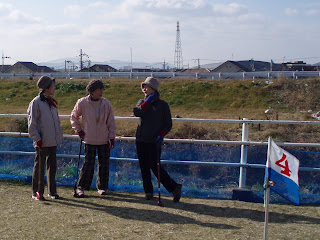Mascots, they are everywhere. Have you ever noticed the vast amount of mascots to be found in Japan? Having a mascot is not a particularly Japanese thing, as they also are to be found in other parts of the world. The very special thing about the Japans mascots is that they are for all and everything.
A cute blue elephant found in Akita
As I browsed the internet on the subject, I came across a very interesting article about Japan’s mascot mania from CCNGo. According to this article it does indeed seem that Japan has a special love for their mascots. I Japan mascots are not only for children, but for all. So even high authority groups as the police and the Defense Ministry in Japan has its own character. The Defense Ministry in Japan for example has Prince Pickles, who even has his own cartoon, as their mascot.
And mascots really seem to have an effect as in 2008, Hikone Castle in Shiga prefecture benefited from their mascot when it achieved a 61 percent jump in visitors thanks to Hikonyan, a plump white ¨samurai cat, according to the CNNGo article.
Why Japan has such a fascination with the mascots and cannot seem to get enough, Matt Alt, co-author on a book about the subject, explains: (the mascot is) a modern manifestation of animistic traditions that go back centuries and millenia, in which it was believed that many sorts of inanimate objects possessed souls.[1] The Mascots can therefore be seen as a modern Yōkai (a ghost or demon) or a type of nature god that has already been part of Japanese culture for a long time. And this seems quite fitting, as most are representatives of brands, products or company, so in their own way they are gods of money and profit - Or gods of fortune on the sports field.
A Buddha like mascot from Nara, created to celebrate Naras "birthday"
Next time you see a little cute blue elephant stomp down the street, try to see the religious culture behind, and experience a newborn respect. Mascots do have both an effect and a story – they are an embedded part of Japanese traditional culture – believe it or not.
Read more:
Japan's mascot mania | CNNGo.com http://www.cnngo.com/tokyo/life/japans-mascot-mania-812276#ixzz1M92n1vOQ



















